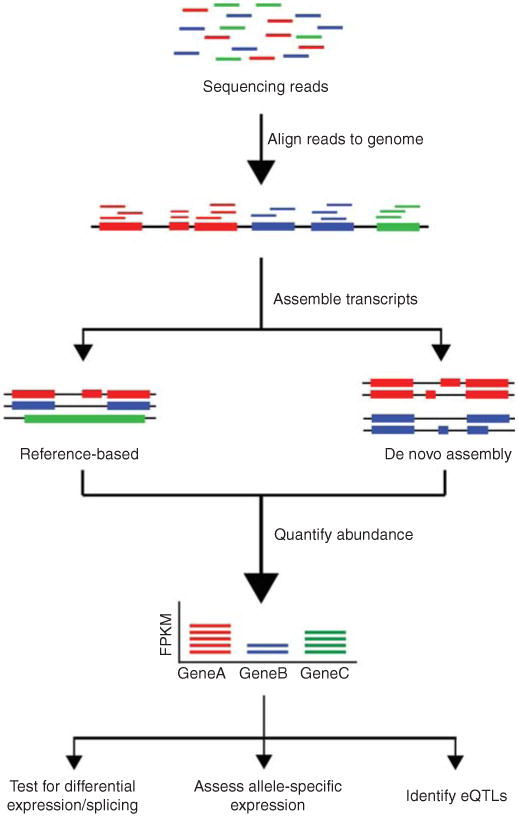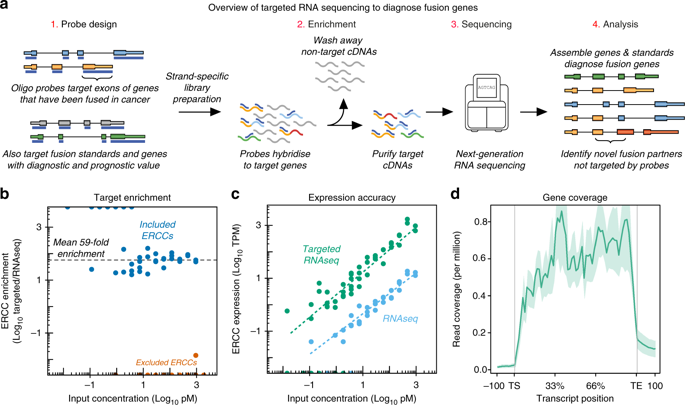Source: Erin E Heyer et al; Nature Communications, volume 10, Article number: 1388 (2019)
RNA sequencing (RNA-Seq) provides valuable insights into the transcriptome of a cell. Compared to Sanger sequencing or microarray based methods, RNA-Seq provides high coverage and greater resolution of the dynamic nature of the transcriptome. Beyond quantifying gene expression, data generated by RNA-Seq facilitates discovery of novel transcripts, identification of alternatively spliced genes, and detection of allele-specific expression.

Overview of RNA-Seq data analysis
In a recent study done by Heyer et al, formalin-fixed paraffin-embedded (FFPE) specimens were subjected to RNA Seq on Illumina Hiseq platform to investigate possibility of diagnosing sarcomas by identifying disease-specific fusion genes. Targeted RNA sequencing approach was performed on 6 sarcoma cases. RNA Seq analysis pipeline detected a rare fusion gene (EWSR1-PATZ1) which was identified in a pathologically challenging case.
Current work elucidated reliability of RNA Seq and RNA Seq analysis pipeline to establish diagnosis of low grade glioneural tumor in clinical diagnostic approach for sarcoma disorders. Authors described RNA Seq for FFPE samples as a reliable method in establishing diagnosis of sarcoma in daily practice.



